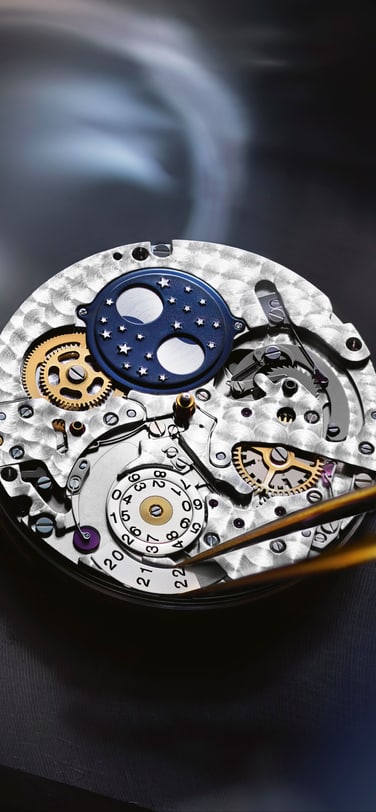World of watches
MECHANICAL MARVELS: IWC’S MANUFACTURE MOVEMENTS
THE HEART AND SOUL OF A MECHANICAL WATCH IS ITS MOVEMENT. THE INSIDE PART OF THE WATCH THAT MAKES EVERYTHING GO – THAT KEEPS THE HANDS REVOLVING AND INDICATING TIME ACCURATELY – IS A MINIATURE AND INTRICATE WORK OF BOTH ART AND SCIENCE.
By Michael Friedberg


MANUFACTURE MOVEMENTS SINCE 1868
Beginning in 1868, IWC continuously produced watches with movements which were designed, manufactured, and assembled in Schaffhausen by IWC. These included legendary movements, such as the robust calibre IWC (or caliber 52) for pocket watches, the hand-winding calibre 83 with small-seconds for wristwatches, and the automatic winding calibre 85 family of movements featuring IWC’s innovative Pellaton winding system.
After more than a century, all this unfortunately changed in the 1970s due to the so-called “quartz revolution”. These new electronic movements seemed destined to make mechanical watches, with all their intricate parts and hand assembly, nearly obsolete.

RENAISSANCE OF MECHANICAL WATCHES
Fortunately, mechanical watches enjoyed a renaissance beginning in the late 1980s, and mechanical movements ultimately triumphed over quartz ones for high-end watches. A then-unknown IWC watchmaker, Kurt Klaus, developed in the early 1980s an in-house module, to be attached to an outsourced movement. The module was an innovative perpetual calendar which soon changed the course of watchmaking at IWC. In 1985, this module was introduced as the Da Vinci Perpetual Calendar Chronograph, Reference 3750, and “in-house” became prominent again. IWC then began work on other movements using in-house modules and changes to base movements, including masterpieces like the Grand Complication, the Il Destriero Scafusia and, slightly later, a rattrapante chronograph module in the early 1990s.

FIRST NEW IN-HOUSE MOVEMENT IN TWO DECADES
But the most momentous change occurred in 2000, with the important introduction of IWC’s calibre 5000. For the first time in years, a movement was completely designed, manufactured and assembled in-house. Its winding used the proprietary IWC Pellaton system, originally introduced in the 1950s. With this 8-day automatic movement, IWC returned to the hallowed halls of movement manufactures.
After the debut of this ground-breaking movement, the calibre 5000, in several iterations and now as the calibre 52000 family, has several technical improvements. It is used as a base for many other in-house IWC movements, including Portugieser Perpetual Calendar models.

IWC’S IN-HOUSE CHRONOGRAPH CALIBRE 89
In 2007 IWC also introduced its first in-house chronograph movement, calibre 89360, which was a significant technological accomplishment. Chronograph movements are particularly difficult to manufacture, and there are few watchmakers which at that time produced their own chronographs in-house.
This new IWC chronograph used a 40 jewel automatic movement with a flyback function, which allowed the chronograph hand with only one push to reset to zero and start again. It was used by IWC in variations in many watches, including several celebrated Pilots Watches. This chronograph movement evolved in the next 10 years to an entire group of chronographs, known as the calibre 89000 family, which included two flyback variations and two perpetual calendar chronographs.

EVOLVING INTO A MOVEMENT MANUFACTURE
During this time, the number of IWC in-house movements expanded exponentially. Calibre 5000 became the calibre 51000 and then 52000 families, including perpetual calendar and tourbillon models. A calibre 80000 family was developed for Ingenieur models. A calibre 59000 family was produced, used in several variations in large Portofino 8-day hand-wound models
Two extraordinarily complicated movement families also were developed, including the calibre 94000 family (used in constant force tourbillons and with astronomical displays). Also manufactured was the calibre 98000 family of movements, first with design cues from IWC’s earliest pocket watches and later as a base for certain complex repeater and tourbillon models.
IWC has evolved into a true movement manufacture, with not one or two in-house movements, but with a multitude of offerings. This reflects a true change in IWC – both back to its historic roots and also at the cutting-edge of current technical development.
Part II of this article will look at IWC’s latest movement introductions, its new calibre 69 and calibre 32 families.